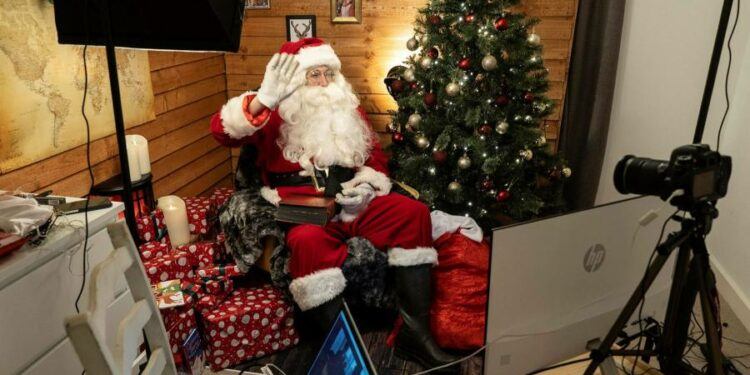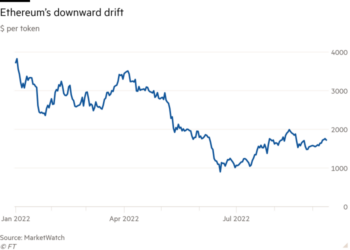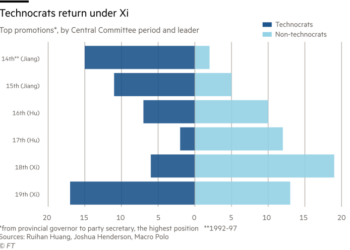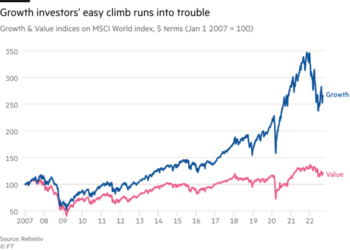The other day my wife asked me if I thought 7.45am was too early for our two boys, aged five and two, to see Zoom Santa. It was one of the last available slots.
My absent-minded reply was something to the effect of, well, they love the zoo and I didn’t know the zoo had a Santa, but it’s a long way to drive at that hour.
“Not Zoo Santa,” she said. “ZOOM Santa.”
“What’s Zoom Santa?” I asked.
I should have known better. In this the second year of the Covid Era, with so much of our working and personal lives now conducted over video platforms, why should Santa Claus be any different?
The real Santa, of course, is perfectly safe in his North Pole bubble. The one outing he makes each year is a solitary nocturnal one, free of social interactions, as children and their parents nestle all snug in their beds.
But his thousands of lookalike helpers around the world, who greet children in shopping malls, department stores and schools in the weeks before Christmas and relay their gift requests northwards, are on the front lines of the pandemic. For them, there needs to be a safer way.
That, at least, was the thinking of Graham Cooley, an Irish entrepreneur from Dublin. In May 2020 he bought the domain zoomsanta.ie, on the off chance Covid-19 was going to stick around through Christmas.
Necessity was the mother of Cooley’s Zoom Santa venture. He had a gym and a vending machines business that were hit hard by the pandemic, and two young kids to provide for.
“I was sitting at home, had a lot of time on my hands and was thinking, what am I going to do if this keeps going? What [business] is safe from Covid?” he told me on a WhatsApp call earlier this week. “So I built the website and said, ‘OK, I’ll just leave it there and see what happens’.”
Initially Cooley was of the opinion that “there will be no Covid at Christmas time”. But by August last year he realised he had probably been wrong about that, and launched his site the following month.
“We had a great run at it last year, had great fun and of course afterwards thought, ‘OK, that’s it, we won’t be around next year’,” Cooley said.
This year zoomsanta.ie has a stable of 14 Santas, many of them actors by training. “We very quickly realised being on screen is very different from sitting in a shopping centre and saying to every kid that comes in, ‘What do you want for Christmas?’” Cooley said. “The actors are amazing. There was so much energy.”
Many kids, he added, also respond better when they can engage with Santa from the comfort and familiarity of their own homes rather than a noisy, crowded shopping centre — special-needs children in particular.
This gave me hope ahead of my own boys’ appointment early Singapore time on Thursday with That’s Santa!, a North Carolina-based operation not connected with Cooley’s. There are dozens of similar virtual Santa services around the world.
My five-year-old, Luke, has a shy streak. His first encounter with Santa a few years ago in Beijing began well enough as we queued excitedly for at least 30 minutes.
But as we finally approached, Luke decided he wanted nothing to do with the stranger in the red suit after all. Our keepsake from that outing is a picture of me holding Luke as he cries. Santa sits alone in his sleigh next to us, gazing wearily at the camera.
It went better with Zoom Santa. There were no tears and, after initially trying to hide under the table, Luke perked up with questions for him.
Cooley’s Santa venture caters mainly to kids in Ireland and the UK, but has also connected with children and their relatives on the other side of the planet. “We can have many feeds on one call — granny in the nursing home who can’t get out and the aunties and uncles in Australia,” he says. “It’s a global thing although we definitely didn’t mean it to be that when we started.”
Thanks to such unanticipated benefits, Cooley concludes that “it may be here to stay — not Covid, knock wood, but Zoom Santa”.











